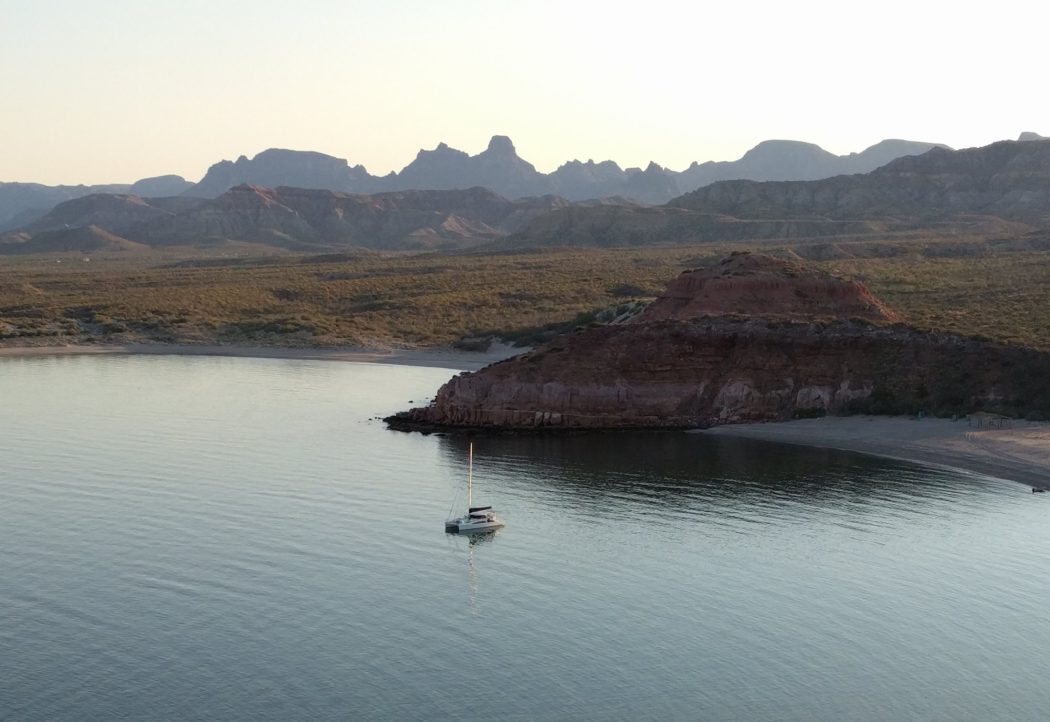This is going to be a big season with a lot of friends scheduled to visit Strikhedonia. I try to put together guides to help visitors learn about sailing and to give them an idea of what they are in for… Anchoring is probably the most important part of sailing, at least if you want to sleep at night, yet it has taken me a long time to write about it. The time had come and here comes the information!
Anchoring Operation
1. Turn on windlass power
2. Untie anchor safety line
3. Unlock dog on windlass
4. Slowly (2-3 knots) approach the anchorage
5. Circle area to examine; bottom conditions, depth, and rocks (actually I make a square box around where I want to anchor and place the anchor in the center, this helps at night to check if we are safe should the winds kick up)
6. Approach location for anchor, point into the wind, stop the boat (this is critical, once when still drifting forward the chain hooked the anchor and caused it to fail to set), and note depth
7. Lower anchor to the bottom
8. Slowly back up boat, making sure the chain is let out straight and without any piling
9. Extend rode to 6:1 or 7:1 (assuming space is available)
10. Once all chain is let out, attach anchor bridle
11. Lower chain so there is a large loop
12. Lock dog on windlass
13. Put engines into reverse at the minimum RPM
14. Wait for 60 seconds
15. Ramping up the power on both engines at 2,400 rpm
16. Wait for 60 seconds – check visual points of reference and GPS to ensure anchor is holding
17. Slowly back off the power
18. Turn off windlass
19. Dive anchor to confirm it is well set
NOTE:
When calculating Scope on Strikhedonia, 7.25 feet must be added to the depth gauge
• 5.25 feet added to depth gauge for true water depth, depth gauge is set to show 0 feet when in 1.5 feet of water, (1.5 + 3.75 draft [bottom of keel to waterline])
• 2 feet must be added for the distance from anchor bridle to water
Example:
1. Add 2 feet for distance waterline to anchor bridle
2. Add 4 feet for tide (typical Sea of Cortez and Pacific to Puerto Vallarta)
3. Add 5.25 feet for depth gauge offset
4. Add example of 9.0, as seen on the depth gauge reading (at low tide)
– actual water depth 14.25 (9 + 5.25) – 18.25 (4 + 5.25 + 9) varies depending on tide level
5. Result = 20.25 feet (2 + 4 + 5.25 + 9) is the height from anchor bridle to ocean bottom
Expected winds 00-09 knots – total rode of 101 feet, scope of 5.0 (5.0 X 20.25)
Expected winds 10-19 knots – total rode of 111 feet, scope of 5.5 (5.5 X 20.25)
Expected winds 20-25 knots – total rode of 122 feet, scope of 6.0 (6.0 X 20.25)
Expected winds 26-30 knots – total rode of 132 feet, scope of 6.5 (6.5 X 20.25)
Expected winds 31-35 knots – total rode of 142 feet, scope of 7.0 (7.0 X 20.25)
Expected winds 36+ knots – total rode of 162 feet, scope of 8.0 (8.0 X 20.25)

No Comments